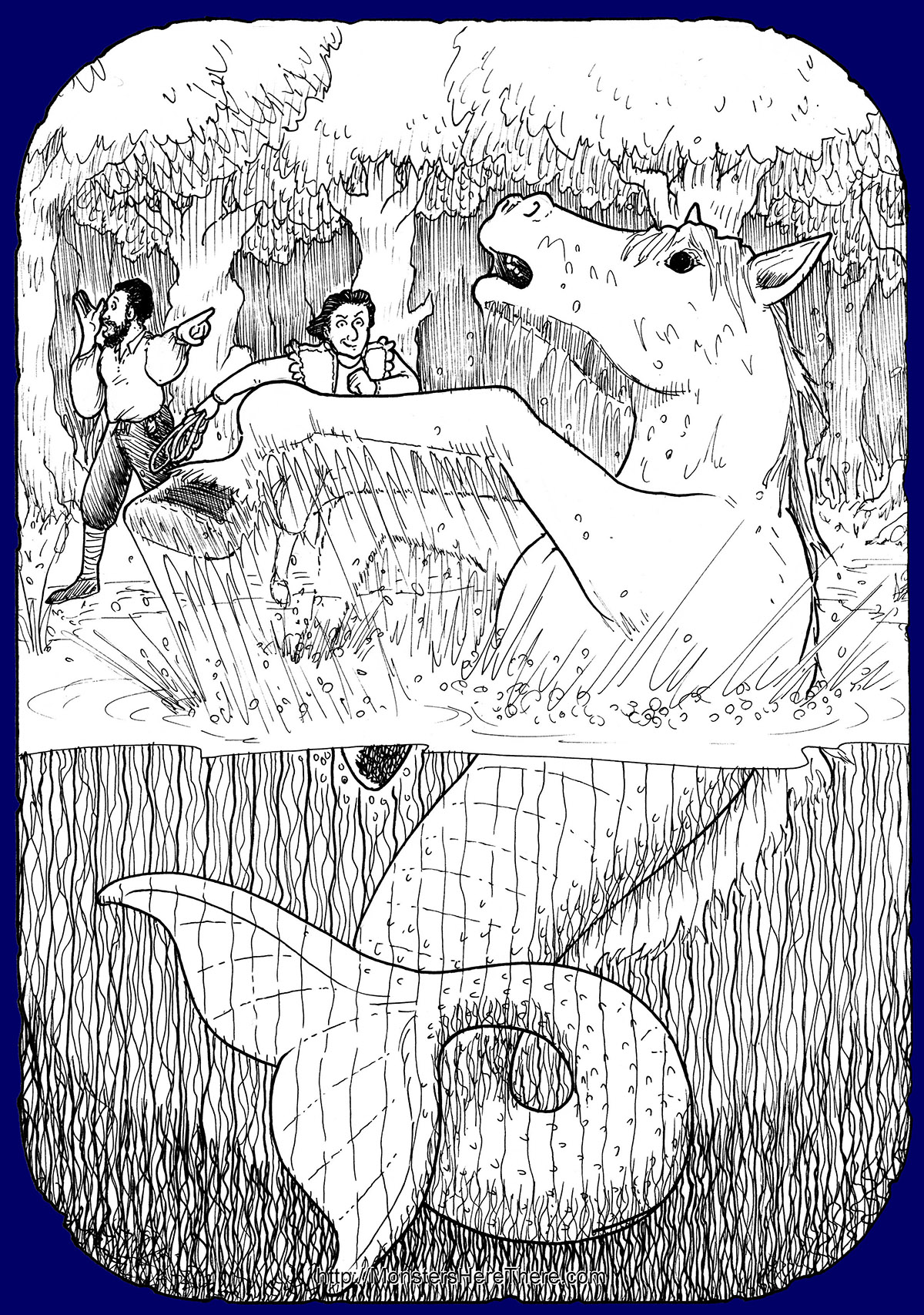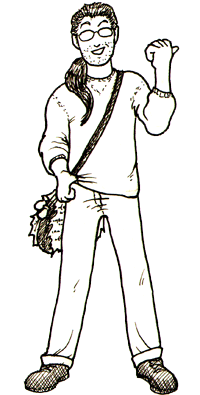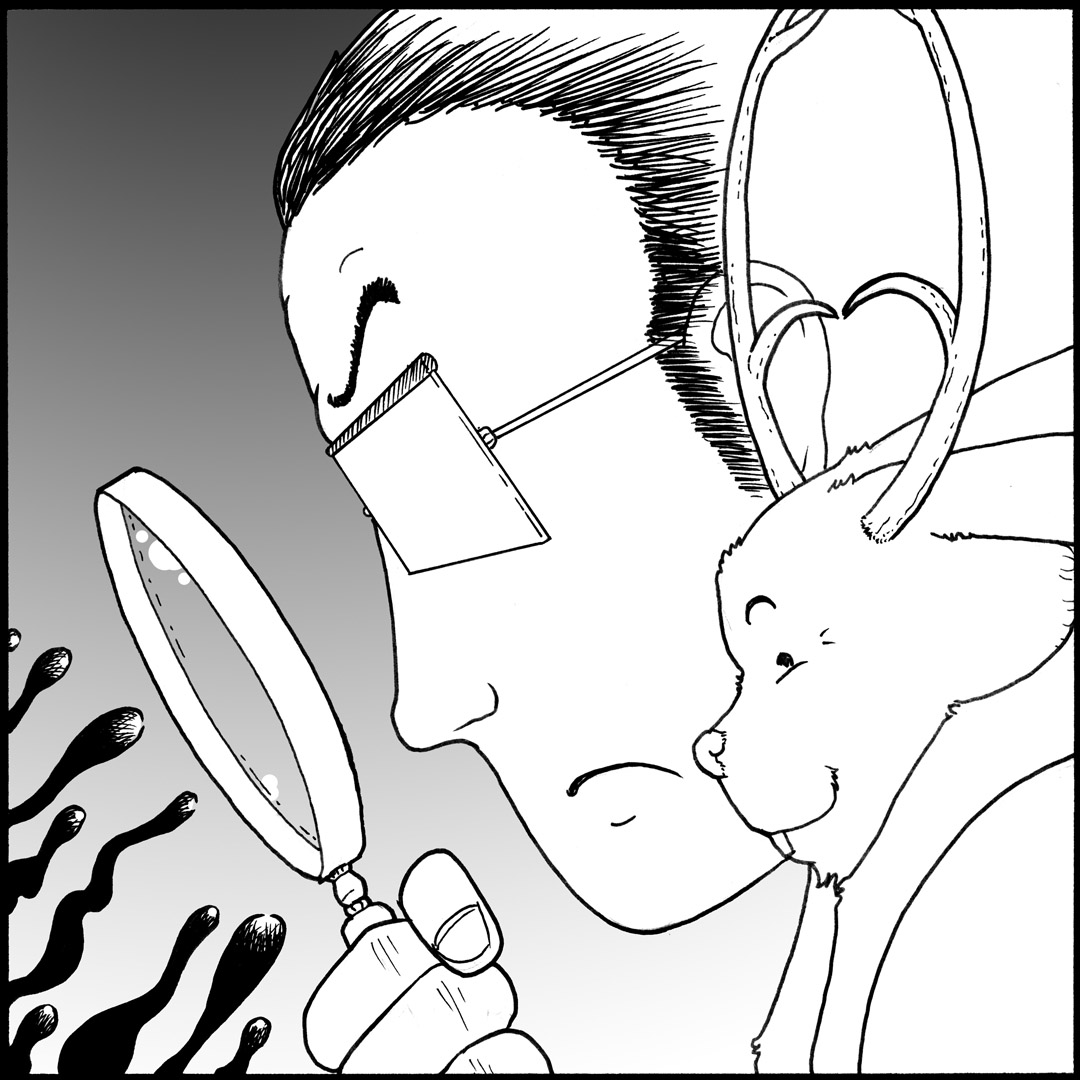Area(s) Reported: Scotland and Ireland
Date(s) Reported: ca. 1794-1900
In Scotland and Ireland, tales are told of shape-changing beings that haunt the lakes and waterways of the two neighboring countries. They are called variously Kelpies, Water- Kelpies, and Each Uisge [Scottish: pronounced “ack ish-kei,” which literally means “water horse”]; and though many claim that Kelpies and Each Uisge are two separate creatures, the tales told of each are very similar and there is a genuine mixing of the lore. In the tales, water-horses appear in a wide range of forms with roughly two different behaviors... either they are outrightly murderous, or overly amorous. In both cases, they are very dangerous. One set of tales describes a man-eating beast that changes shape to match what will attract its human prey. This water-horse has been reported occasionally in the form of a boat, waiting at shore for travelers; but most often they are said to take the form of a tame and beautiful horse. Horses were once worth their weight in gold for the work they could do, so finding an unclaimed one was a stroke of luck... disguised as a horse, a water-horse was a great temptation to many people. However, anyone who so much as touched such a horse or boat found themselves stuck fast to it as it plunged back into the water with a fiendish cry and a noise like a clap of thunder. Naturally, it was important to be careful when encountering a strange horse or object near any waterway or lake. If the creature was not what it seemed, often telltale signs would be available... it might still be wet, or have water weeds or sand on or near it, and occasionally the beast would be poorly transformed, such as a horse with webbed feet. If disguised as a boat, well... I wonder why they don't do that more often. Maybe they do, and there are just fewer survivors to tell the tale! Trapped by a Water-Horse One often told story is of a water-horse that nearly trapped ten children. The children were playing near water, when a horse came over to them; they naturally wanted a ride on it. But as the horse’s back stretched out to accommodate more and more children, the last child, who was stroking the horse’s nose with one finger, became suspicious. 
When he tried to pull his hand away, he found his finger stuck to the creature’s nose just as his playmates were now stuck to its back. He escaped the beast by cutting off his own finger before the creature dove into the pond... but his playmates were doomed. Another tale of woe comes from Loch Chrois, Scotland, where it is said that a young couple who stayed late by the lake mistook a black horse they found for one belonging to one of their families. They mounted the beast, hoping for a leisurely trot home... only to be rushed to the bottom of the loch, screaming for help and unable to dismount. These water-horses are capable of surviving away from water for extended periods of time, and sometimes join groups of horses left to wander free by farmers. These new horses are prized because of their unnatural strength and endurance, but are only held by either charms, or by simply keeping them from the sight of lakes and waterways. The minute these precautions are missed, the water-horses dive into the nearest body of water... and drag down anything that is attached or near them at the time. 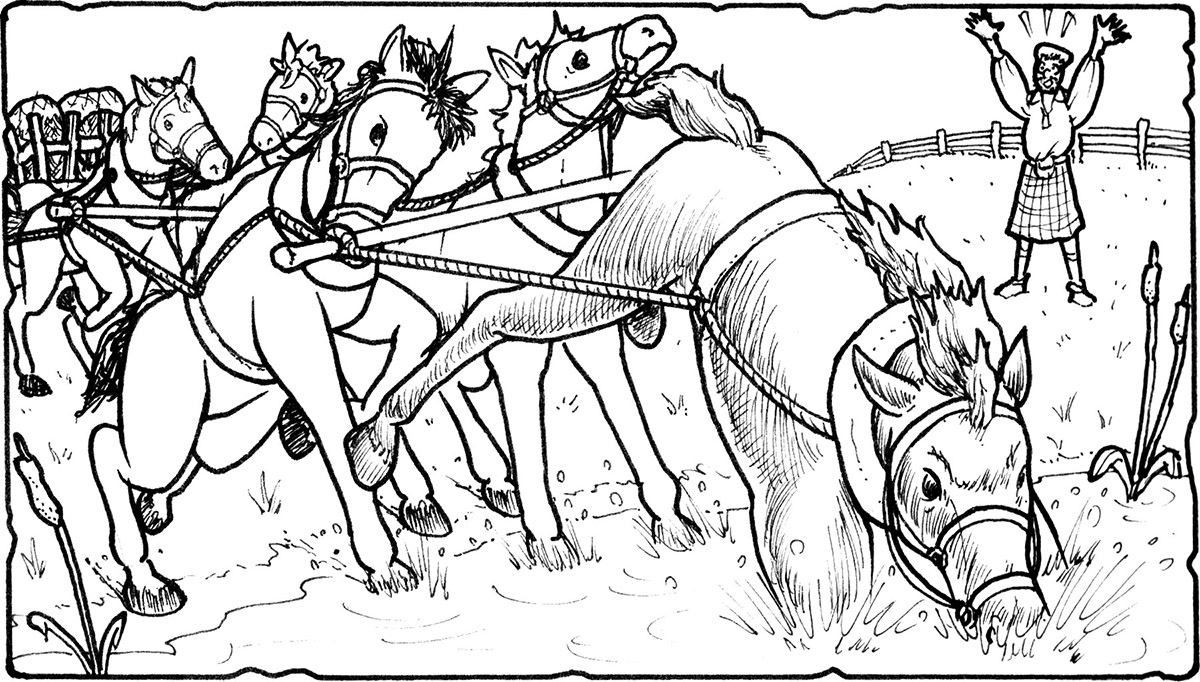
According to legend, a farmer named Mac-Fir Arois lost a cart and a number of horses — and in some versions, his life — because they were tied to a water-horse pulling his cart when the creature ran for a lake; all that was left of the horses were some livers and bones that floated ashore the following day. The water-horses in the previous stories seem to be unable (or unwilling) to simply grab a victim. Instead they change shapes to trick a victim into touching them. If a potential victim simply walks away, the monster may scream... but it does not pursue them. Talking Water-Horses Now famous for a different monster, Loch Ness in Scotland once had a water-horse. This creature was drowning people who foolishly rode it, so a man named MacGrigor set out to stop the monster. One day, MacGrigor ran across a beautiful bridled horse grazing near the lake. Immediately suspicious, he walked to the beast as if to mount it; then struck the horse across the nose with his sword instead, breaking off a piece of its bridle. 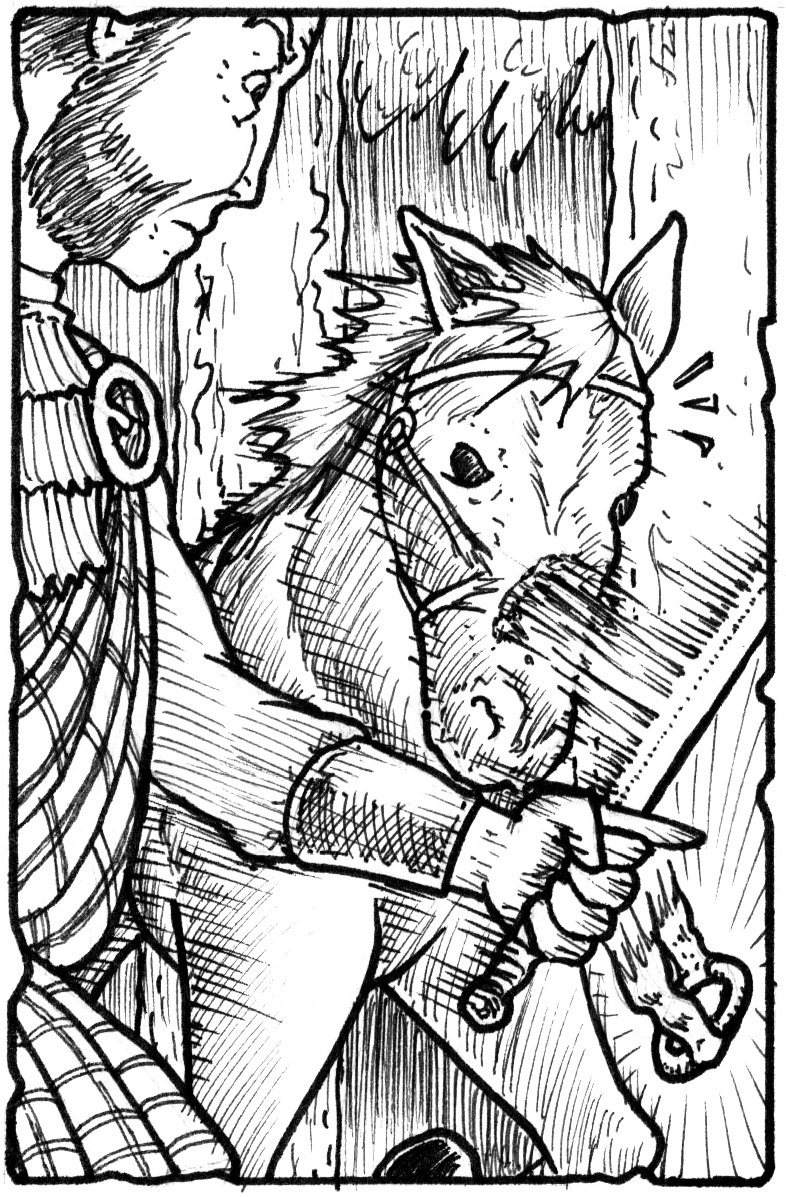
MacGrigor grabbed the piece out of curiosity and, to his surprise, the water-horse asked for the bridle back. The bridle was the source of all the creature’s power and, no matter how it pleaded or threatened, the water-horse couldn’t get the bridle piece back... and without it, the beast died. In other stories, water-horses take human form to trick or trap victims; but these are far less successful in capturing humans. One famous account has to do with a man in Corgarff, Scotland, who needed to cross a raging river to reach his sick wife. A strange tall man, wet from the chest down, expressed pity for the man, and offered to carry him across the river. The man knew this stranger was likely a water-horse but, having no other way to cross, he agreed to the ride and climbed on the stranger’s back. Halfway across, the stranger dove under and tried to drown the man; the man took a tight grip, and the two tumbled in the flood water together until the man felt a foothold on the riverbank, and ran from the river to escape his would-be helper. 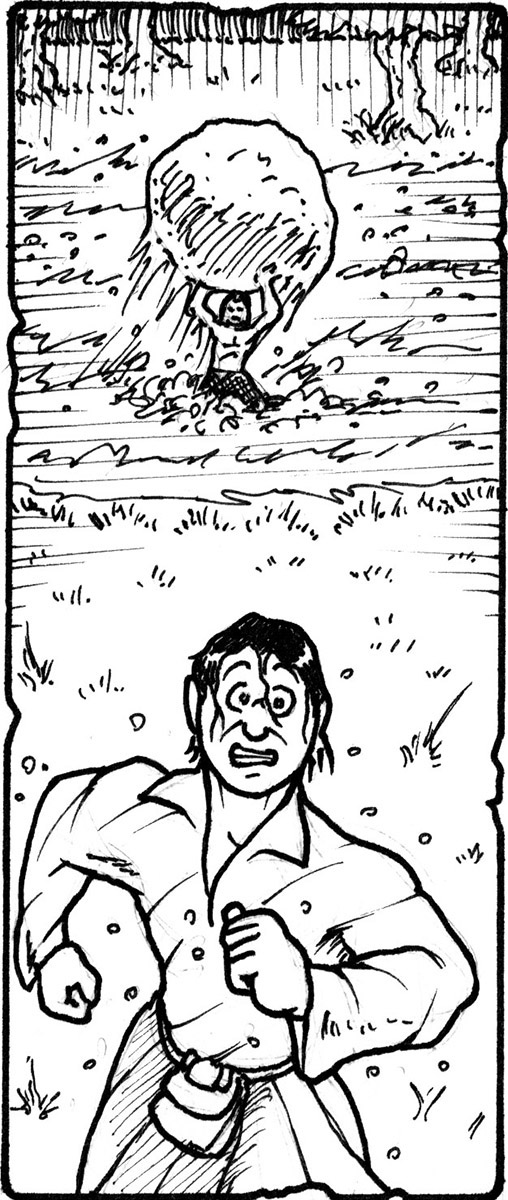
The disgruntled water-horse threw a gigantic boulder after the man that landed about 80 yards away from the river; afterwards, it was named the “Kelpy’s Stone.” Dinner Dates? When water-horses come in human guise, they often act more interested in courting than drowning... but since anyone a water-horse sets its heart on disappears beneath the water never to be seen again, few care to find out if the creatures’ intentions are honorable or culinary. One young lady, watching her cattle, was approached by a handsome lad who laid his head in her lap and fell asleep. 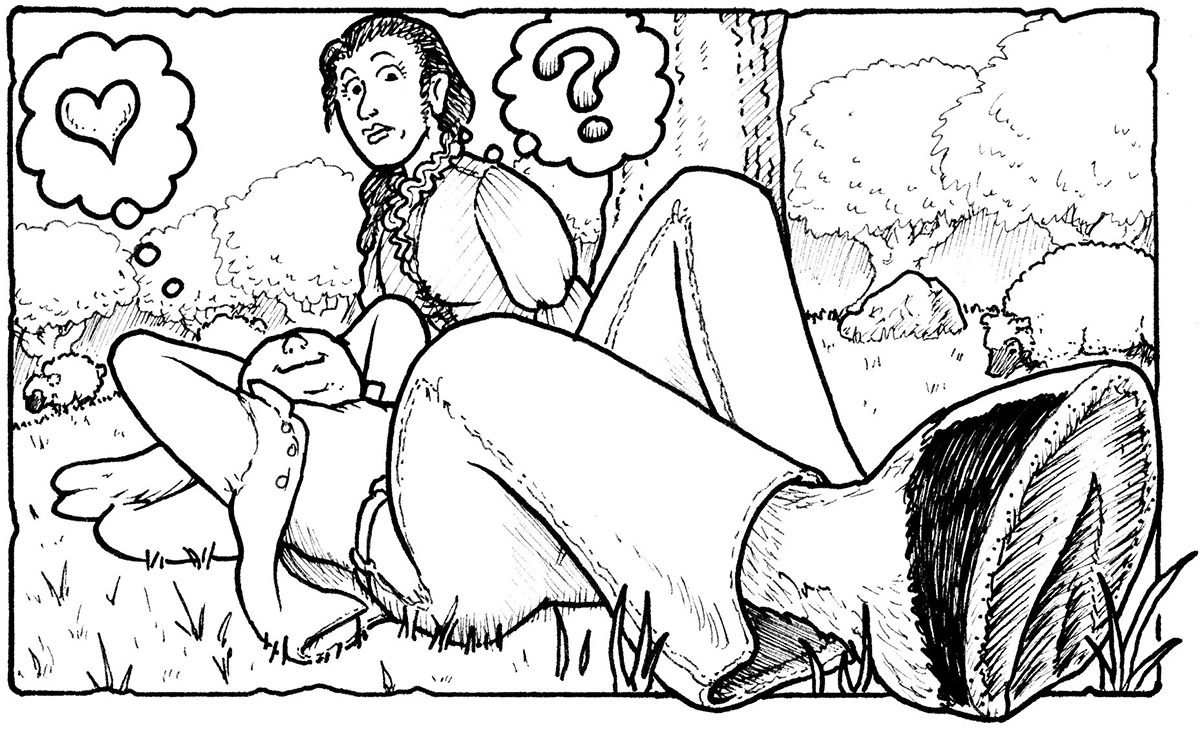
When she noticed he had horse hooves instead of feet (or, sometimes, water weeds and sand in his hair), she carefully laid his head to the ground, and cut away the part of her skirt he was sleeping on to make her escape. Another lass, approached in her home by a bold water-horse who insisted on courting her, sorted him out by splashing a pot of boiling water onto his groin! Not surprisingly, he was out of the cabin and back into his lake in record time. Another story tells of a group of young men caught out in the woods at night, who took shelter in an old cabin. To pass the time, they danced as one of them played his pipes. They were soon joined by a group of women who heard the music; but the piper noted these new visitors had hooves instead of feet, and was the only person to escape. A rescue party that came in the morning found only bits of the other men; clearly, they had been eaten. Fighting Water-Horses Given the trouble water-horses are claimed to cause, many people have decided to fight them. When a woman was abducted at Loch na Mna (“The Woman’s Lake”), a blacksmith decided it was time to get rid of the local monster. He built a one-way door into a hut near the lake, and roasted meat until the smell attracted the water-horse to enter. 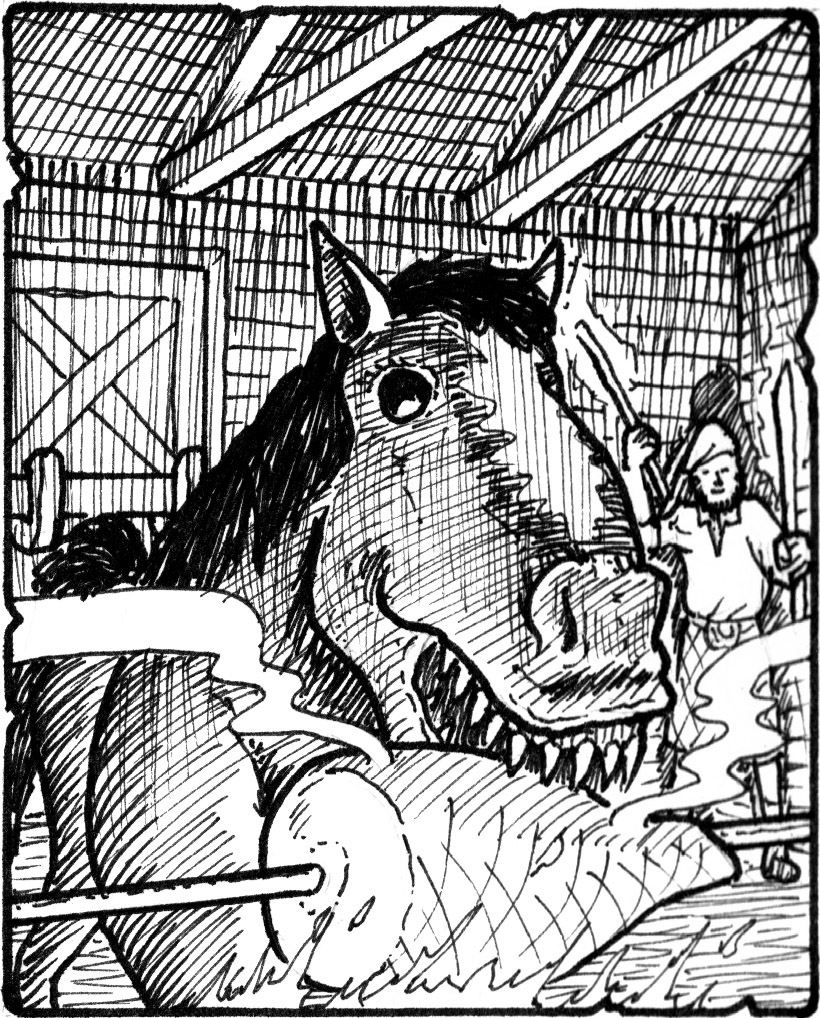
As it attacked the food, he drove hot irons through the beast; when it died it became a soft, grey mass, similar to a jelly-fish or a glob of starch. Tales also tell of two other water-horses, in human form, who were either cut to pieces or stabbed by knives, killing them... which makes it seem that water-horses are very vulnerable when in human form. But you don’t have to kill a water-horse to protect yourself; they can be scared off. In any form, they seem to be vulnerable to silver projectiles; more than one was driven away by a gun loaded with a silver coin, when normal pellets had no effect. They also cannot pass a doorway that has a rowan tree branch above it. In the end, though, the best way to handle a water-horse is to avoid it in the first place. So, remember... if you visit Scotland and Ireland, and run across a horse near a lake or waterway, just walk away!
See also: The Loch Ness Monster (aka "Nessie") | 